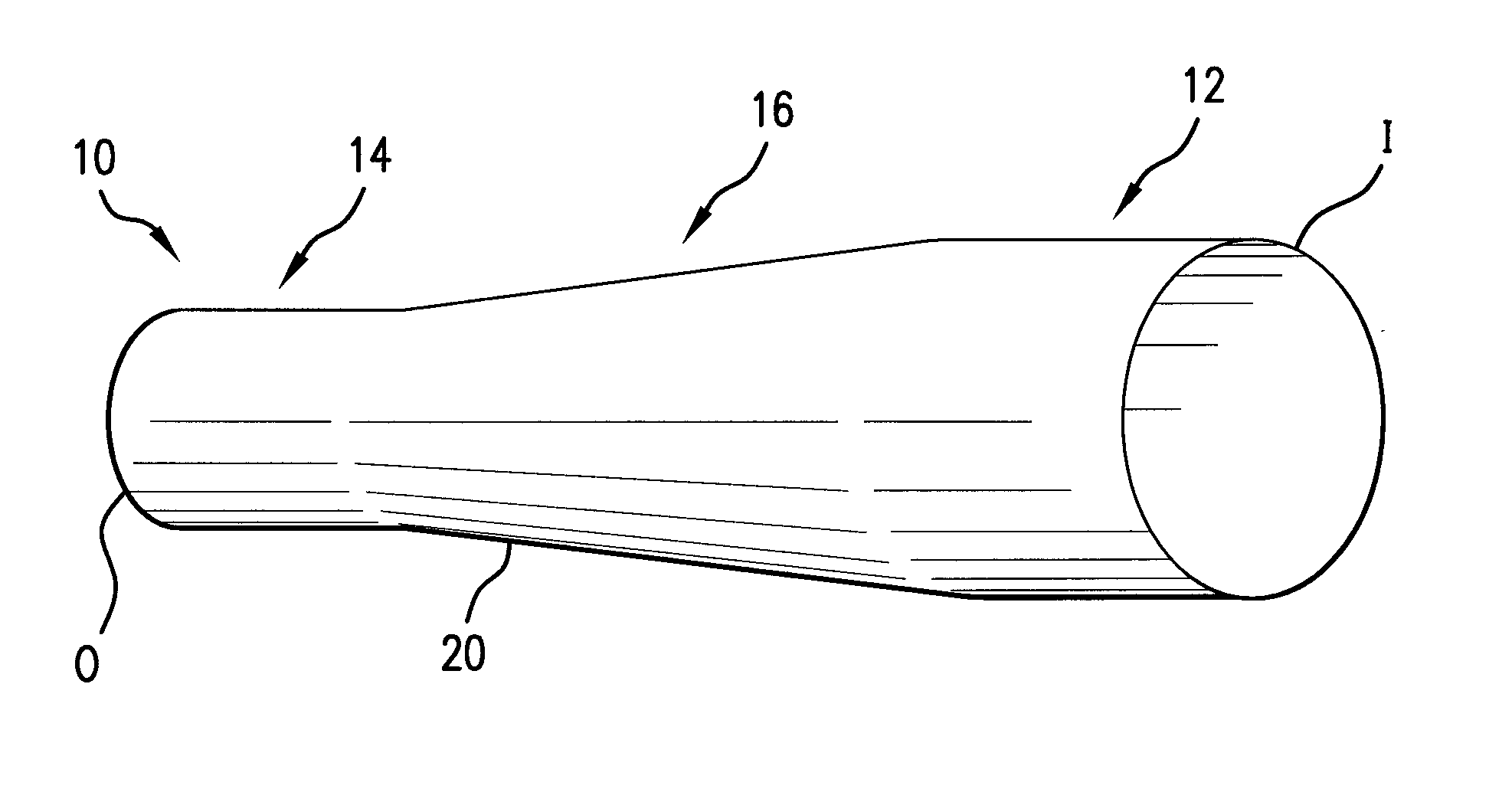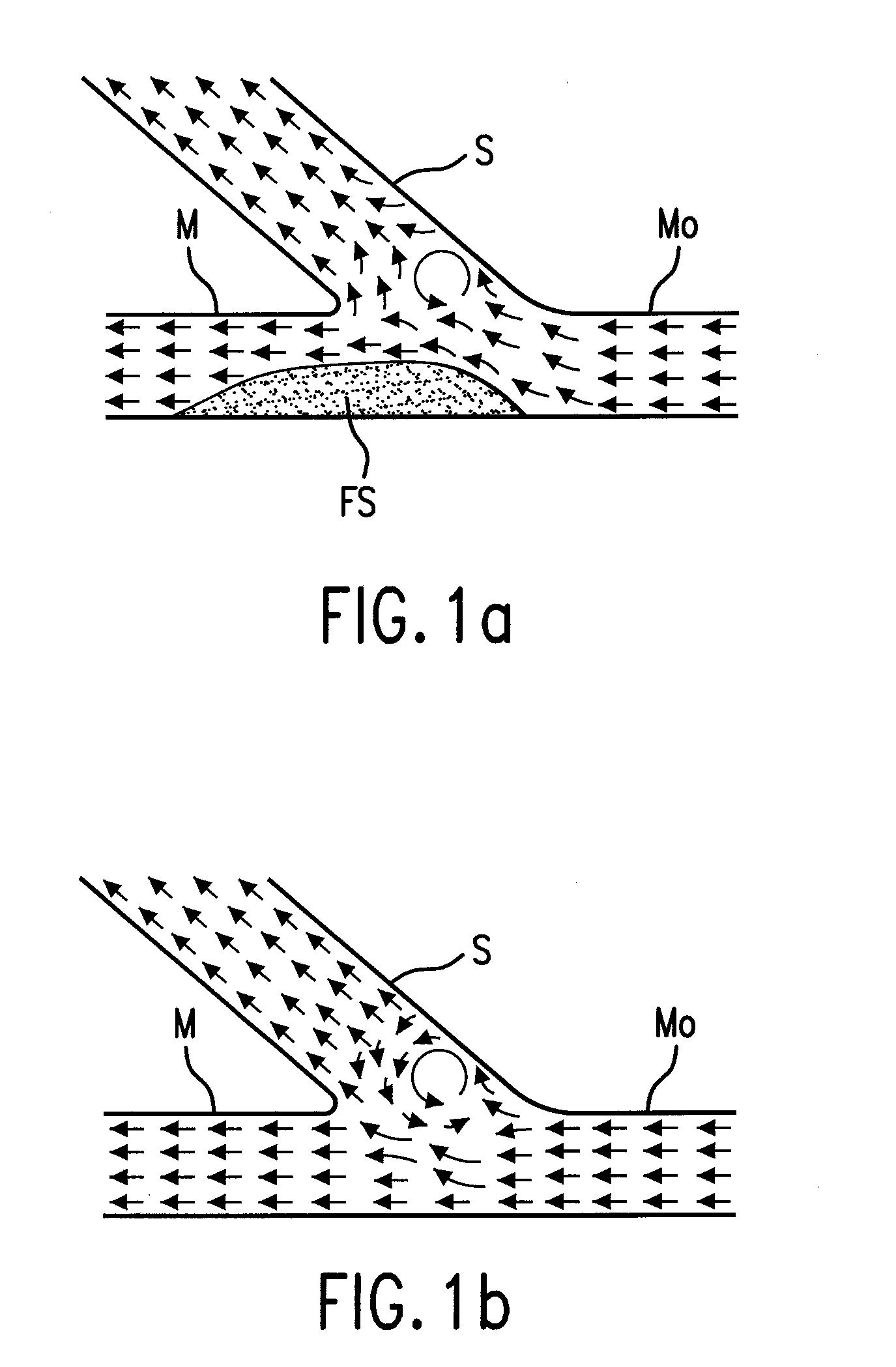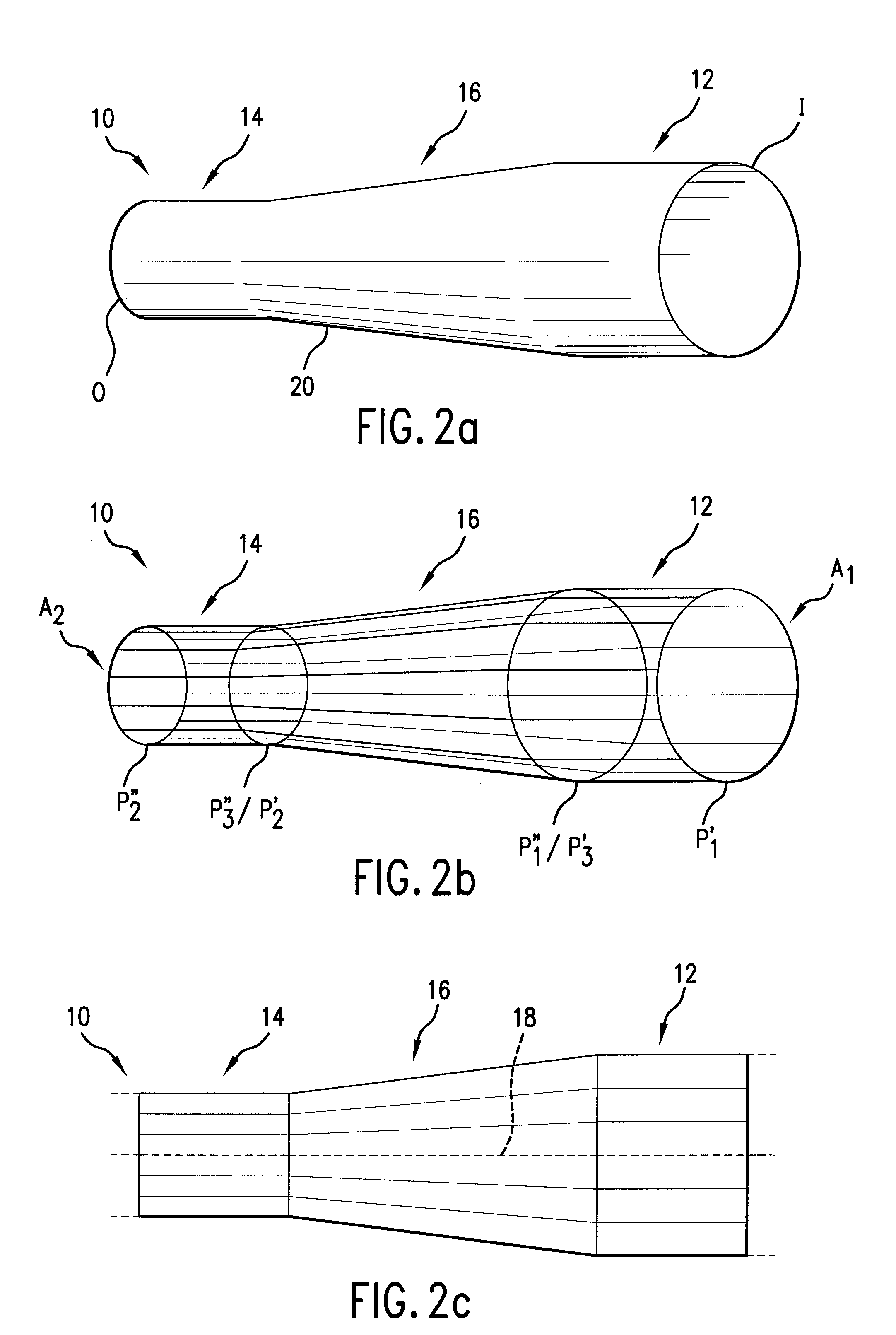Method and apparatus for stenting
a stent and stent technology, applied in the field of implantable medical devices, can solve the problems of inflammation in the region, occlusion of the lumen, total blockage of the lumen, undesired narrowing of the lumen, etc., to achieve the effect of preventing restenosis, promoting a more favorable flow regime, and minimizing or eliminating any flow separation areas
- Summary
- Abstract
- Description
- Claims
- Application Information
AI Technical Summary
Benefits of technology
Problems solved by technology
Method used
Image
Examples
Embodiment Construction
[0050]The present invention is in part based on an observation that vascular injury may be caused by or exacerbated by, among other things, flow disturbances in the flow of blood at a given region of the lumen. Flow disturbances in the form of flow separation might work to increase the likelihood of inflammation by increasing a residence time for inflammatory cells near the walls of the lumen, by decreasing fluid shear stress at the wall, by imposing bi-directional shear stress, by promoting particle sedimentation and by decreasing mass transfer of waste products from the wall into the lumen. Flow separation is manifested in regions where flow vortices are created next to lumen walls, or where blood is substantially stagnant next to the lumen walls. Flow disturbances also may tend to adversely affect endothelial cell function and hence prevent the endothelial cells from providing a barrier to inflammatory cell infiltration. Although the precise mechanism or mechanisms by which flow ...
PUM
 Login to View More
Login to View More Abstract
Description
Claims
Application Information
 Login to View More
Login to View More - R&D
- Intellectual Property
- Life Sciences
- Materials
- Tech Scout
- Unparalleled Data Quality
- Higher Quality Content
- 60% Fewer Hallucinations
Browse by: Latest US Patents, China's latest patents, Technical Efficacy Thesaurus, Application Domain, Technology Topic, Popular Technical Reports.
© 2025 PatSnap. All rights reserved.Legal|Privacy policy|Modern Slavery Act Transparency Statement|Sitemap|About US| Contact US: help@patsnap.com



